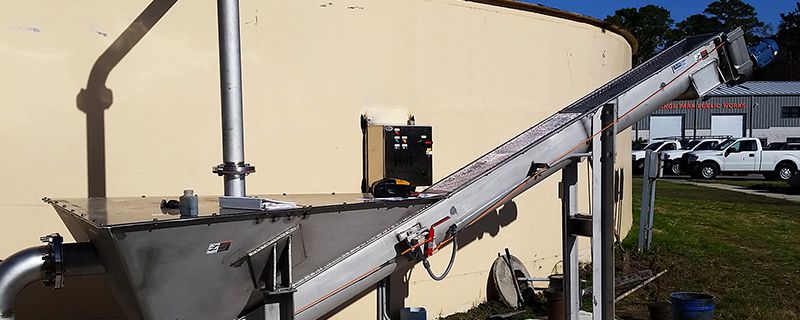The Grit Classifier is a key piece of equipment for most wastewater treatment plants. This equipment is located in the Headworks area of the facility. It receives a grit slurry from the process and through separation and removal action removes the grit from the stream, thus improving the performance and extending the life of pumps and other equipment downstream. The grit removed is ready for disposal.
Grit Classifiers are exposed to an extremely abrasive environment. Although corrosion resistance is certainly a factor as well, abrasion resistance is a more important design consideration. The right design and proper routine maintenance can measurably increase the life-span of this equipment and reduce or eliminate emergency maintenance efforts and costs.
JMS strongly believes in an external lower end bearing design. The end bearing includes an external flanged roller bearing and seal assembly. The tail end of the screw conveyor located in the low end of the grit classifier’s hopper is where grit accumulates prior to it being conveyed up and out of the system. There is a solid argument to not have a bearing located in this abrasive environment if there is another option available. Additionally, internal bearings are ‘out of sight, out of mind’. The preferred external end bearing, on the other hand, is readily visible for even a casual walk-by inspection, as well as being readily accessible for maintenance, repair, and at some time, replacement.
Getting back to maintenance… failure to properly maintain the Grit Classifier system, as is the case with most of the equipment at a treatment plant, can result in a reduction in the life cycle of the equipment, higher overall maintenance costs, and potential catastrophic failure. Before any maintenance or inspection is performed be sure to abide by all current safety requirements particularly covering Lockout/Tagout of energy supply.
Proper preventative maintenance includes consistent and proper greasing of the bearings. One common method is a lubricator, and keeping it loaded and maintained. Bearings should also be inspected for any unusual vibration, leaks, or unexpected spills. Timely replacement of the bearings and seals when needed will prevent damage to the shaft and avoid potential catastrophic failure of the screw wearing through the bottom of the trough.
The Grit Classifier drive unit is a bit like a new car. It should have gear box oil changed relatively soon after placed in operation (at 500 hours or so), but then oil changes can be extended to every six months to a year, depending on the daily hours of operation.
Lastly, the grit classifier should periodically be drained, the cover removed, and the interior of the hopper and screw conveyor inspected for wear and alignment. This offers the opportunity to check the entire system out, for any unusual wear of flight thickness, flight edges, alignment, solids build-up, etc.
Routine maintenance is an important part of the process to keep your equipment running in peak condition and to lengthen its life expectancy. Your equipment supplier can provide you with advice and assistance in developing your preventative maintenance program.
Jim Brettman has been with JMS for 9 years and serves on the sales side of the business as a Sr. Application Engineer focusing on the JMS Delta-SEPARATION. He has a BS in Civil Engineering from the University of Tennessee and worked in various positions with Exxon Co. for 12 years. After locating to Charlotte, Jim ran his own business for seven years as a rep for industrial wastewater treatment equipment and systems. Jim is proud to have worked closely with Dave Myers in closing the largest single sale by JMS to date, the Boston Deer Island Delta-SKIMMER (scum pipe) project. Jim says, “I thoroughly enjoy working with a Company that embodies integrity, quality, and service as its mantra, and working with our Reps to increase the sales of JMS products.”

